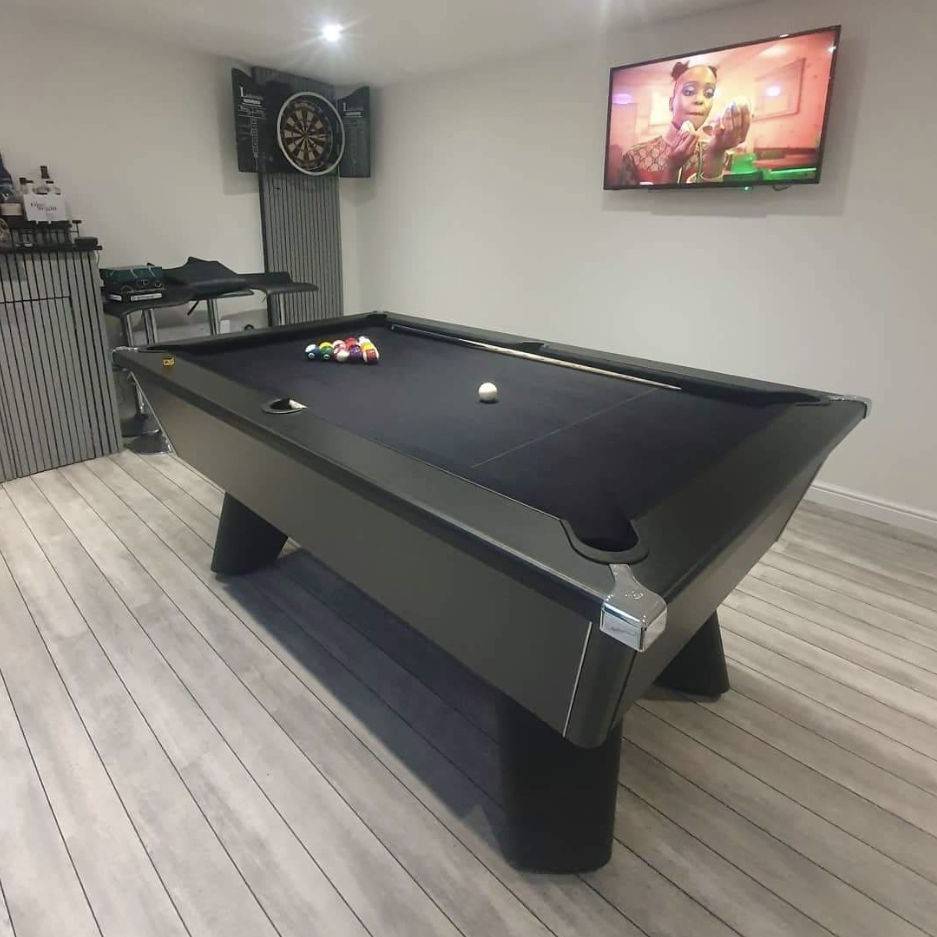The Journey from Billiards to Modern Pool: A Historical Insight
Billiards and pool are games of strategy, skill, and patience. The soft click of balls colliding, the smooth wooden cues, and the lush green baize of the table are all iconic elements that have enticed players for centuries. Yet, the pool as we know it today is quite different from its predecessor, billiards. The journey from billiards to modern pool is a fascinating tale that reflects cultural, economic, and technological changes over time.
The Origins of Billiards
The earliest ancestors of the game trace back to 15th-century Europe, especially France. Contrary to today's indoor tables, these early forms were played on grass, much like croquet. The term 'billiards' itself is derived from the French word 'billart,' meaning 'mace,' which was an implement similar to golf clubs or croquet mallets used to strike the ball.

Transition Indoors
As the European climate wasn't always conducive to outdoor games, billiards gradually moved indoors. By the 16th century, wooden tables with simple barriers or boundaries emerged. The green cloth covering, reminiscent of the grassy origins, became a hallmark of the game.
From Maces to Cues
Initially, players used maces to push balls rather than strike them. But as the game evolved and shots became more complicated, especially those near the table's rail, the handle of the mace, called the 'queue' (meaning 'tail'), was utilized to make the shots. This transition marked the birth of the modern cue stick.
The Rise of the Game among Royalty
Billiards quickly became a game of the European elite. Louis XIV was an avid player, and the game's popularity spread across the French aristocracy before making its way to England. Shakespeare even referenced billiards in Antony and Cleopatra, highlighting its widespread appeal.
From Europe to America
By the 18th century, billiards had journeyed to the shores of America. The game found fans among many of the founding fathers, including George Washington and Benjamin Franklin. As it grew in popularity, so did the establishments housing billiard tables, known as pool rooms. Initially, these were venues where people "pooled" bets on horse races, with billiard tables added later for patrons' entertainment.
Emergence of "Pool"
While billiards involved only three balls and intricate rules, the American variation introduced 15 balls. Players would "pool" together a consolidated bet, leading to the coining of the term "pool" for the game. The objective was to pot as many balls as possible, which was far more accessible and straightforward than the traditional billiards.
Technological Advancements
The 19th century saw significant advancements in table and equipment design. Slate began to replace wooden tables, offering a smoother and more consistent playing surface. Rubber cushions were introduced, improving the bounce and accuracy of shots. The balls transitioned from wooden or clay versions to the more durable and consistent ivory. However, with the near extinction of the elephant population, the search for an alternative led to the invention of celluloid, the predecessor of today’s plastic balls.

Billiard and Pool Today
Today, billiards and pool are enjoyed by millions worldwide, both recreationally and professionally. Different variations have emerged, such as snooker, eight-ball, and nine-ball, each with its distinct rules and strategies. Pool halls have become a cultural phenomenon in their own right, celebrated in films, music, and literature.
Cultural Impact and Societal Shifts
The 20th century witnessed a shift in the perception of pool. During the early 1900s, pool halls in America were viewed with suspicion, often associated with vices and unsavory activities. This portrayal was prevalent in movies and literature, where pool halls were the backdrop for criminal deals or places of moral decay. But as with all things, this perception evolved over time.
The 1961 film, "The Hustler," starring Paul Newman, gave audiences a deep dive into the competitive world of pool hustling. While it painted a gritty picture of the game, it also showcased the sheer skill and psychological intensity involved. This film, along with its 1986 sequel, "The Color of Money," brought pool into the mainstream limelight, portraying it as both an art form and a battle of wits.
Notable Figures
Several personalities have shaped the world of billiards and pool:
- Willie Mosconi: Known as "Mr. Pocket Billiards," Mosconi dominated the pool world during his time, winning the World Straight Pool Championship 15 times from the 1940s to the 1950s. He's also known for his promotional work that helped popularize the game in the U.S.
- Rudolf Wanderone: Famously known as "Minnesota Fats," Wanderone was as much a personality off the table as he was on it. While his skills were undeniable, his larger-than-life persona, storytelling prowess, and showmanship endeared him to fans.
- Efren Reyes: Hailing from the Philippines, Reyes is often regarded as the greatest pool player of all time. His intuitive understanding of angles, impeccable control, and unpredictable "kick-shots" have earned him the nickname "The Magician."
Women in Pool
As with many sports, pool was long dominated by men. However, the latter half of the 20th century saw the rise of formidable female players. Jean Balukas, at just 9 years old, began winning against seasoned adult players. By her teens, she was a multiple-time U.S. Open winner. Following in her footsteps, players like Allison Fisher, known as the "Duchess of Doom," and Pan Xiaoting of China, hailed as the "Queen of Nine-Ball," have cemented their places in the annals of pool history.
Technological Innovations and the Modern Game
Today's pool tables are marvels of engineering. Computer-aided design ensures pinpoint accuracy in table flatness. Advanced synthetic materials mimic the feel of traditional baize but offer greater durability. Even pool cues have seen advancements, with some integrating carbon fiber and other materials to provide enhanced flexibility and power.
In the digital age, pool and billiards have also found their space in the virtual world. Video games and online simulators allow players to hone their skills, understand complex shots, and even compete with players globally without leaving their homes.

Conclusion
In conclusion, the journey from billiards to modern pool is a testament to the game's adaptability and enduring appeal. From the grassy courts of France to the hustle and bustle of modern American pool rooms, the game has evolved, yet its heart remains the same. It's a game of strategy, skill, and at times, sheer luck, connecting generations of players across centuries and continents. Whether you're a casual player or a seasoned pro, understanding this rich history adds a deeper layer of appreciation every time you break those balls at the start of a new game.
Are you looking for a Pool Table? check out our pool tables range Pool Tables





